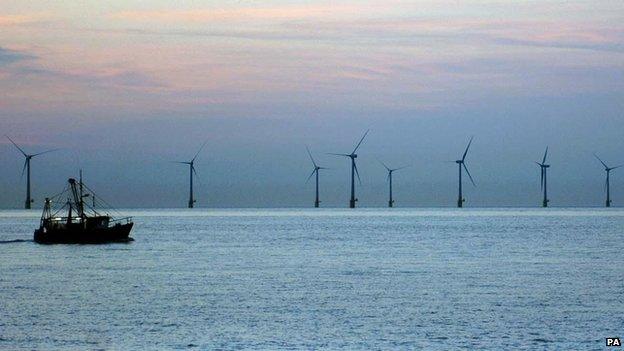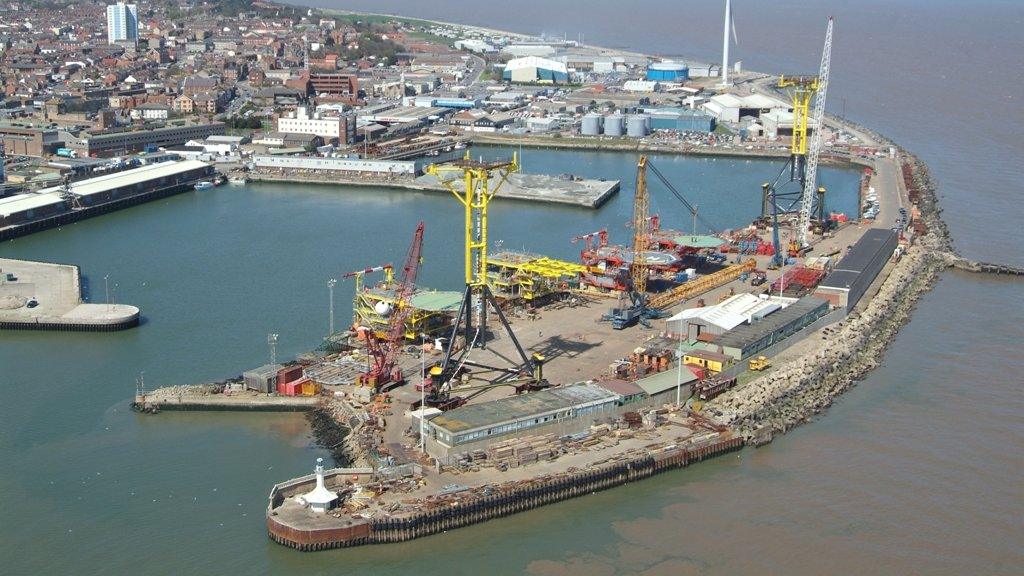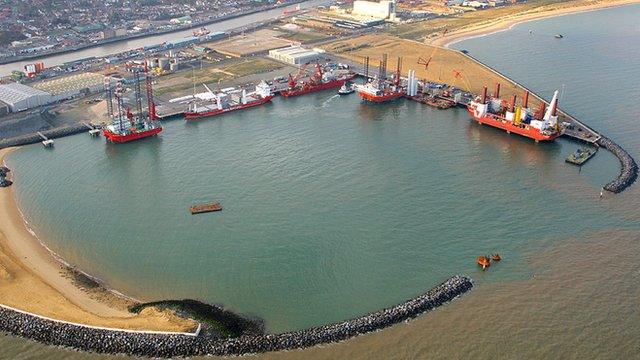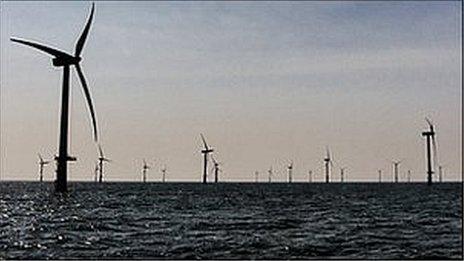East Anglia One offshore wind farm plan reduced in size
- Published

Windfarms are already visible around the East Anglian coast, including at Scroby Sands off Norfolk
A proposed wind farm off the Norfolk and Suffolk coast is to go ahead, but will be smaller than planned.
Scottish Power Renewables (SPR) originally wanted to build 240 turbines, generating 1,200 MW, at the East Anglia One site.
The government has awarded it a 714 MW contract which guarantees a minimum price for electricity for 15 years.
SPR said it would start building 100 turbines in 2017. The project is costing £2bn.
The power firm gained planning consent for a 1,200 MW, external site off Great Yarmouth and Lowestoft last year, hoping to provide electricity for 800,000 homes.
As part of a national allocation of contracts, external, the Department of Energy and Climate Change said it would guarantee £119.89 per MWh of electricity for East Anglia One, powering 509,000 homes.
'Best value'
SPR said the site should be fully operational by 2020, providing up to 3,000 jobs directly or with contractors.
Keith Anderson, chief executive officer of SPR, said: "We are delighted to have secured a contract to take East Anglia One forward, which will be one the best value offshore wind farms ever developed anywhere in the world.
"It signals a major industry breakthrough in efforts to reduce the costs of offshore wind.
"Final negotiations will now commence with the wider supply chain and in the coming months we will look to secure local port facilities to support the project as well as agreeing contracts for the major components."
East Anglia One, which will be 26 miles (43km) out to sea, is the first phase of a potential six-phase development in the southern North Sea.
Bruce Provan, chairman of the Norfolk and Suffolk Energy Group of councils and business organisations, said it was "a tremendous achievement by the developers as well as a major commitment by government".
"It offers significant opportunities through development of the local supply chain, employment during the construction phase and longer term through the operational lifespan of the project of at least 25 years."
- Published26 February 2015

- Published28 January 2014

- Published5 November 2013

- Published27 March 2013

- Published2 October 2012

- Published10 February 2012

- Published31 January 2012
